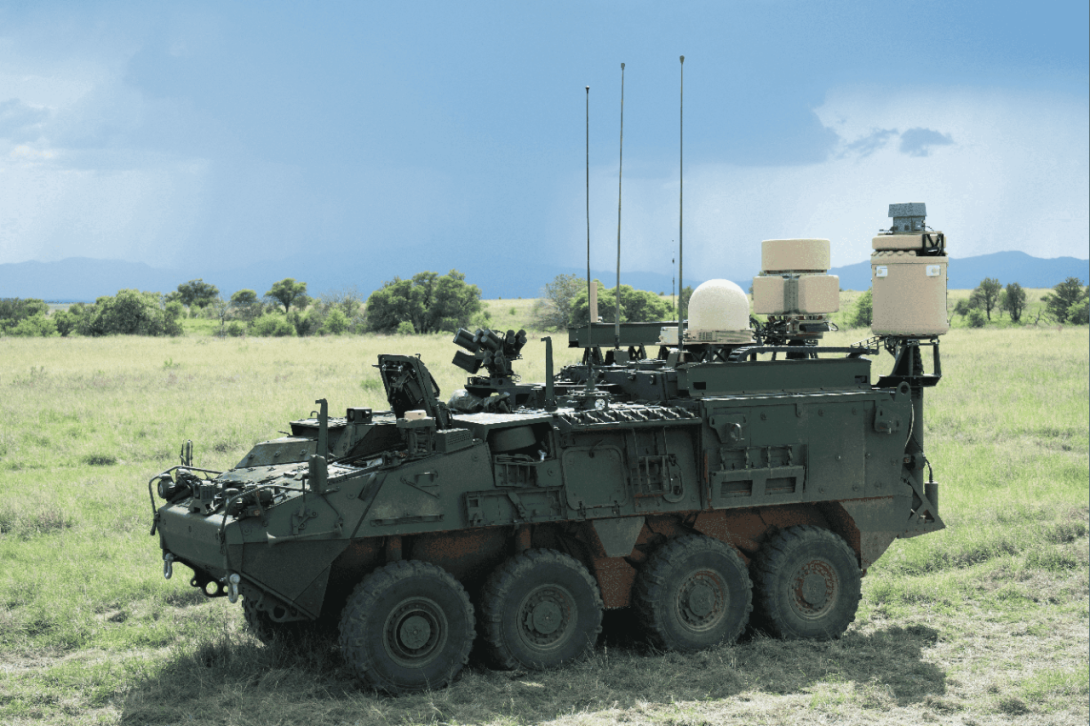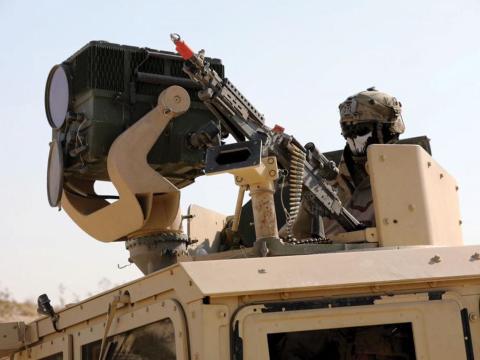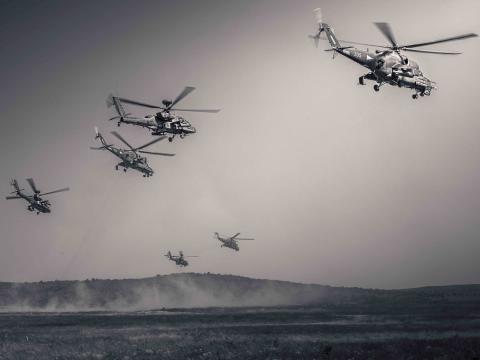Ukraine Demonstrates Need for Electronic Warfare Systems
Assistant Secretary of the Army Douglas Bush told reporters earlier today that both electronic warfare systems sent to Ukraine against unmanned aerial systems (UAS) prove the value in systems such as the Terrestrial Layer System (TLS) for Brigade Combat Teams (BCT) and higher echelons.
The Army’s Program Executive Office-Intelligence, Electronic Warfare and Sensors has two TLS programs, TLS-BCT and TLS-Echelons Above Brigade. TLS-BCT is the Army’s next-generation tactical signals intelligence, electronic warfare and cyberspace operations system that delivers an integrated suite of capabilities. The higher echelon version is planned as an extended-range, terrestrial sensing, collection system providing integrated signal intelligence, electronic warfare and radio frequency-delivered cyber capabilities.
“What we're seeing reinforces the Army's commitment. We've got the programs underway, the TLS-BCT and TLS-higher echelon programs that are the Army fundamentally reinvesting and rebuilding our tactical electronic warfare capability after that had largely left the force over the last 20 years. It adds to the urgency of those programs. They're on track. I feel good about them. But certainly, what we're seeing in Ukraine is adding to that urgency to get those going,” Bush, who serves as the assistant secretary of the Army for Acquisition, Logistics and Technology, told reporters during a Monday morning media roundtable discussion.
"Electronic warfare systems are proving most effective against less sophisticated drones. Electronic warfare is proving highly effective in Ukraine against those on both sides. So, we should learn from that. They're the most vulnerable of the of the group.”
He noted that the Army has been buying counter-UAS technologies “quite extensively, both for fixed site and mobile sets, and that such systems have proven their worth. “A lot of that equipment we're confident in because of how it's done in the Middle East. Frankly, that's where they've seen the most action. Some of that is going to Ukraine, also, though.”
And he touted the capabilities industry provides. “We've seen some very innovative work from defense industry on some very low-cost, low-tech approaches to counter-UAS that have gone to Ukraine that are quite promising,” he said, adding that the Joint Capabilities Office oversees those requirements and is “doing a good job of seeing the landscape.”
The lessons learned will affect future Army investment decisions, he suggested. “And I think all of that will inform, yes, a broad push to invest more in both unmanned aircraft systems and also counter-UAS. The war is showing how much they're here and are affecting the war every day. You can see it in videos every day. So, we have to keep up,” Bush said.
Bush explained that inexpensive counter-UAS technologies are effective against the less expensive drones but that a wide range of countering systems is needed. “In some cases, low tech works just fine. Ukraine has been able to combine just … large caliber machine guns with some night vision equipment into something pretty effective when it's cued by a sensor. But also, at the high end, you need for the group three type things—the Iranian strike drones, for example—show you do need, in some cases, more expensive missile systems. It's a wide range given the diversity of threats.”

We've seen some very innovative work from defense industry on some very low-cost, low-tech approaches to counter- UAS that have gone to Ukraine that are quite promising.
Unmanned aerial systems sent to Ukraine also are proving effective and will affect future purchasing decisions, he reported and cited the Low Altitude Stalking and Strike Ordnance (LASSO) program under Program Executive Office Soldier. LASSO is a man-portable, tube launched UAS carrying a lethal payload munition. It includes electrical optical /infrared sensor, precision flight control, and the ability to fly, track and engage non-line-of-sight targets and armored vehicles with precision. LASSO currently consists of three modules: the launch tube, unmanned aerial system and fire control station.
“On the UAS side, yes, what we're sending to Ukraine are also going to fit into our future plans. We are initiating a new program—the acronym’s LASSO—to provide infantry units primarily with a loitering attack munition. We are, though, going to take a competitive approach. I think early increments of that might be some of the things that have been sent to Ukraine, but there’s a lot of companies in that space, [so] we're going to leverage competition, as well as maybe have more than one version, so we can have more production capacity. So yes, there is probably some overlap between what we're sending and what we're going to buy ourselves.”




